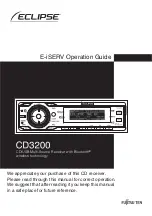
often requires significant adjustment of subwoofer placement. Leave yourself some lati-
tude with regard to subwoofer placement when planning your system—the final adjust-
ment will probably have to be done on something of a trial-and-error basis.
STANDING WAVE SOLUTIONS: ABSORPTION
In theory, it is possible to damp standing waves with absorptive material. The difficulty is that
the thickness of the absorptive material would have to be approximately one-half the wave-
length of the lowest frequency requiring damping. This means a five-foot thickness of fiber-
glass would be required in order to damp everything down to 100 Hz—not very practical.
Standing wave energy tends to be concentrated in the corners of rooms, which is why
these are the worst places for subwoofers. Because of this fact, it may be possible to
break them up somewhat by “breaking up” the corner. This can be accomplished by
placing a column of thick, absorptive materials in the corners (covered by acoustically
transparent cloth, of course). The column ought to be at least a foot on a side, and run
from floor to ceiling. A variation on this theme is to run an absorptive panel diagonally
across the corner, leaving open air space behind it. Neither of these techniques is more
than a partial solution, at best, but they are easily tried and sometimes quite effective.
STANDING WAVE SOLUTIONS: ROOM EQUALIZATION
If a room exhibits severe standing wave problems, the best solution is to know your
own limitations: hire a trained acoustician. These professionals have the necessary
background to analyze the various room modes and recommend appropriate action.
This will sometimes take the form of a custom-designed bass trap, which may be easi-
ly constructed. But it takes specific skills to determine its optimal design.
On other occasions, careful third-octave analysis and equalization may be appropri-
ate. Optimize everything else that you can, then use EQ, if necessary, to “touch up” the
room. This is its best use. If everyone used EQ this way, it wouldn’t have the bad repu-
tation that it has in some consumer electronics circles. Professional use it all the time,
with excellent results—because they know its limitations and how to apply it.
Never equalize a room by ear. Room analysis is not as straightforward as it may seem.
The analysis should be done using equipment with at least one-third octave resolution,
using both spatial and temporal averaging. The final electronic equalization should be
applied by means of a one-third octave graphic equalizer at a minimum.
In any event, rooms requiring this level of treatment are relatively rare, and the skills
necessary to handle them properly are highly specialized. Do not hesitate to use the
professional services of an acoustician when you need them.
15
Содержание SYN 3
Страница 2: ...SYNTHESIS THREE SPEAKERS OWNER S MANUAL...
Страница 20: ......




































